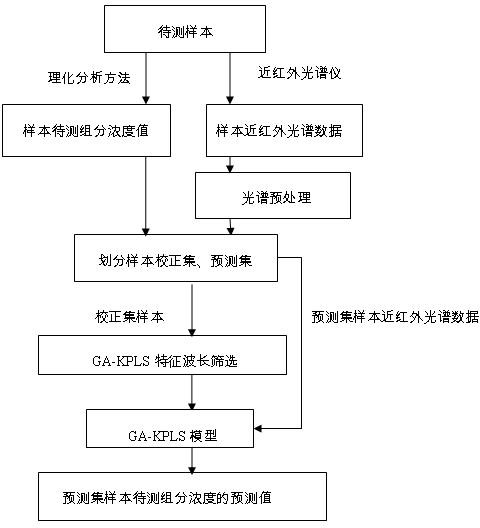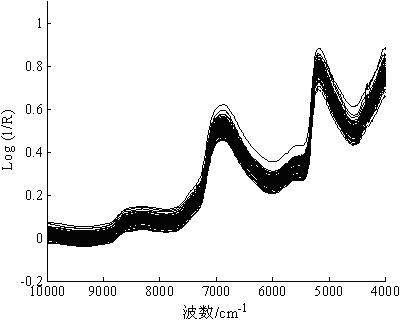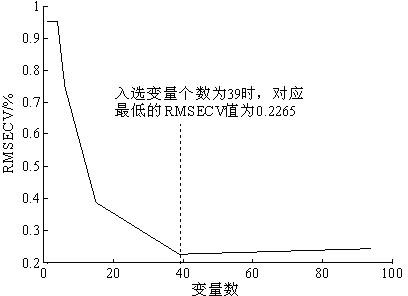Method for screening characteristic wavelength of near infrared spectrum features based on heredity kernel partial least square method
A partial least squares and near-infrared spectroscopy technology, which is applied in the measurement of color/spectral properties, material analysis by optical means, measurement devices, etc. Achieve the effects of high prediction performance and accuracy, reduction of modeling operation time, and strong generalization ability
- Summary
- Abstract
- Description
- Claims
- Application Information
AI Technical Summary
Problems solved by technology
Method used
Image
Examples
Embodiment Construction
[0013] see figure 1 , the present invention is realized according to the following steps:
[0014] 1) Use a Fourier transform near-infrared spectrometer to collect near-infrared spectral data of all samples to be tested, obtain the original near-infrared spectral data of the sample to be tested, and preprocess the spectral data to eliminate factors such as spectral shift or baseline change The impact on the performance of the built model ensures that there is a good correlation between the spectral data and the quality indicators of the samples to be tested. At present, the commonly used spectral preprocessing methods include standard normal variable transformation, mean centering, first-order derivative and second-order derivative, etc. Then, use the physical and chemical analysis method to measure the concentration values of the components to be measured in all samples to be tested, and according to the concentration values of the components to be measured, reasonably ...
PUM
 Login to View More
Login to View More Abstract
Description
Claims
Application Information
 Login to View More
Login to View More - R&D
- Intellectual Property
- Life Sciences
- Materials
- Tech Scout
- Unparalleled Data Quality
- Higher Quality Content
- 60% Fewer Hallucinations
Browse by: Latest US Patents, China's latest patents, Technical Efficacy Thesaurus, Application Domain, Technology Topic, Popular Technical Reports.
© 2025 PatSnap. All rights reserved.Legal|Privacy policy|Modern Slavery Act Transparency Statement|Sitemap|About US| Contact US: help@patsnap.com



